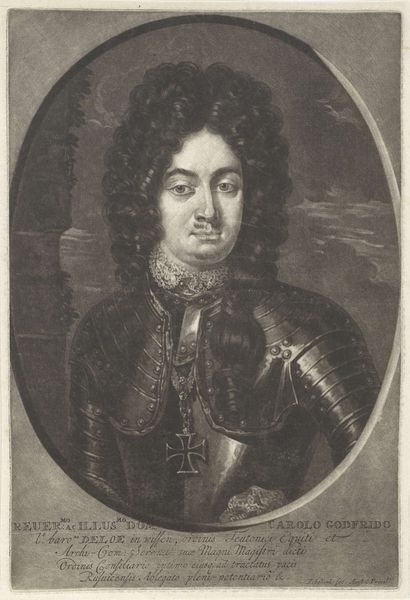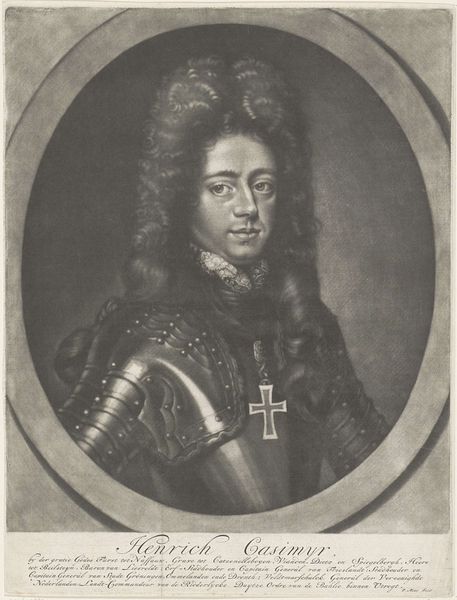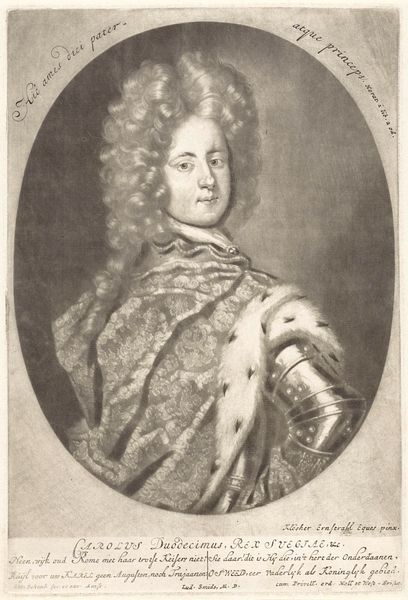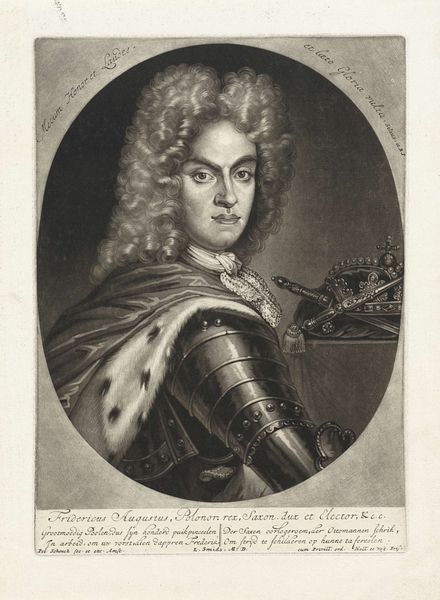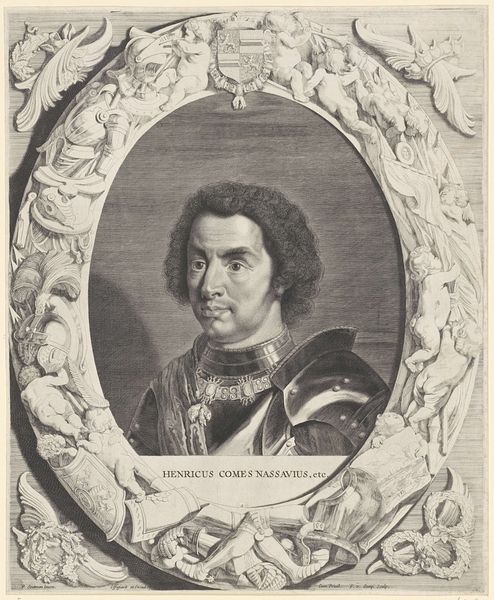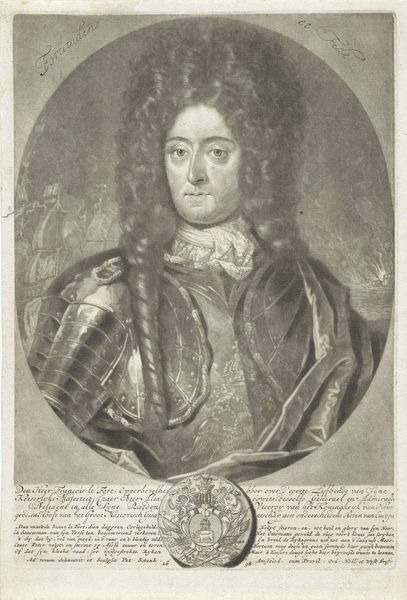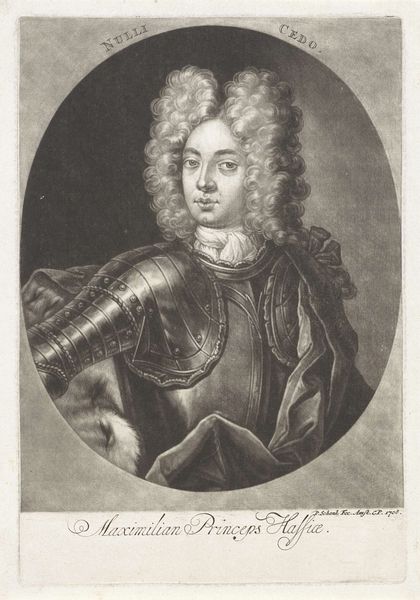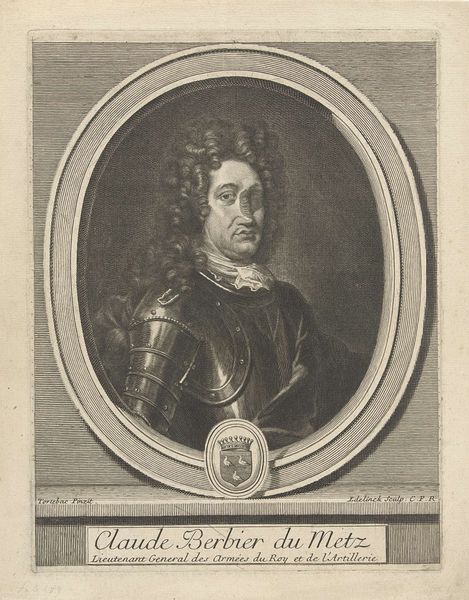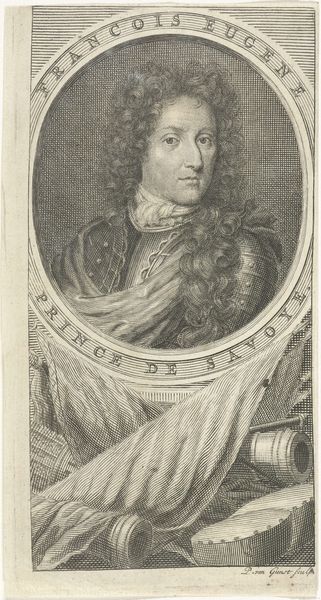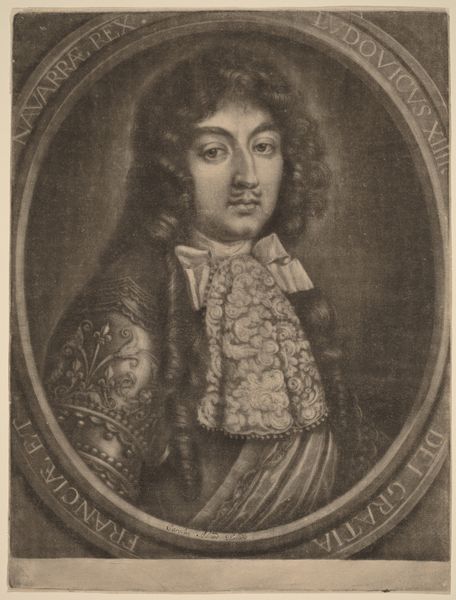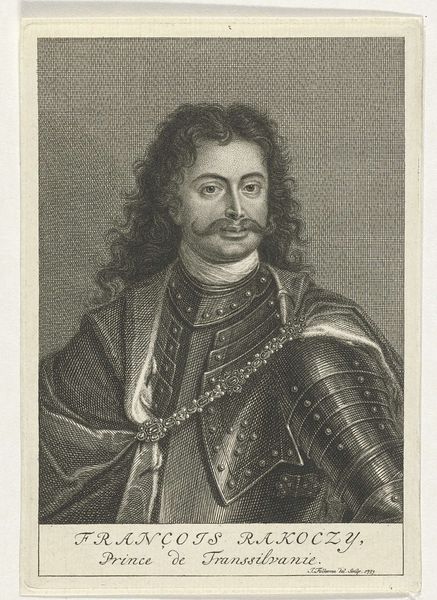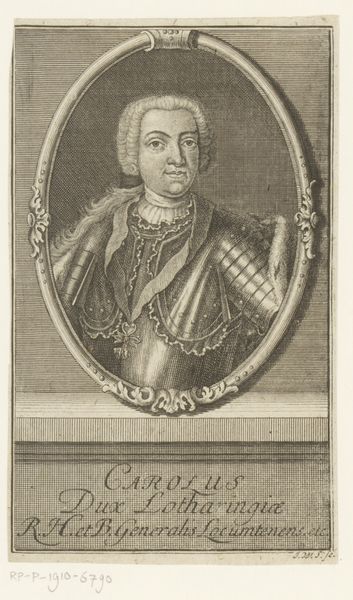
print, metal, engraving
#
portrait
#
pencil drawn
#
baroque
# print
#
metal
#
pencil sketch
#
charcoal drawing
#
pencil drawing
#
portrait drawing
#
history-painting
#
engraving
Dimensions: height 272 mm, width 187 mm
Copyright: Rijks Museum: Open Domain
This is Pieter Schenk’s portrait of Augustus II, King of Poland, made around 1705 in Amsterdam. It is an engraving, meaning that the image is incised into a plate, inked, and then printed. Engravings like this one were a key medium for disseminating political imagery in the 17th and 18th centuries. Augustus II ruled over a fractured Polish-Lithuanian commonwealth. The inscription below the image declares him also to be Elector of Saxony, which gave him a degree of power within the Holy Roman Empire. Augustus was renowned for his patronage of the arts, but also for his absolutist style of rule and extravagant lifestyle. Images like these played an important role in constructing a kingly persona for public consumption. They were often made in multiples and circulated among political elites. To understand the image more fully, we might turn to sources that tell us about the political and economic history of Poland, Saxony, and the Dutch Republic. We might also look at the printmaking industry and the art market in Amsterdam at this time.
Comments
No comments
Be the first to comment and join the conversation on the ultimate creative platform.
